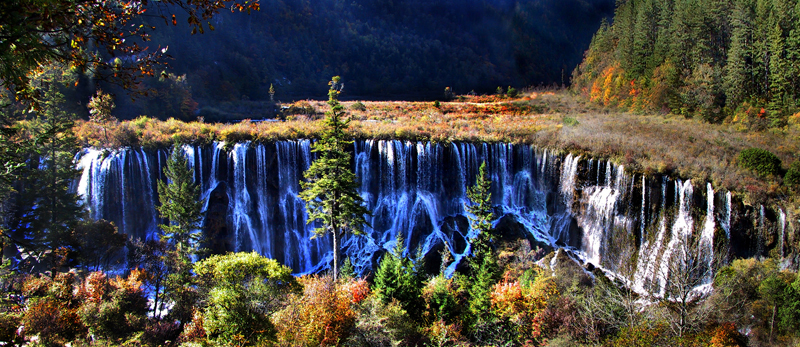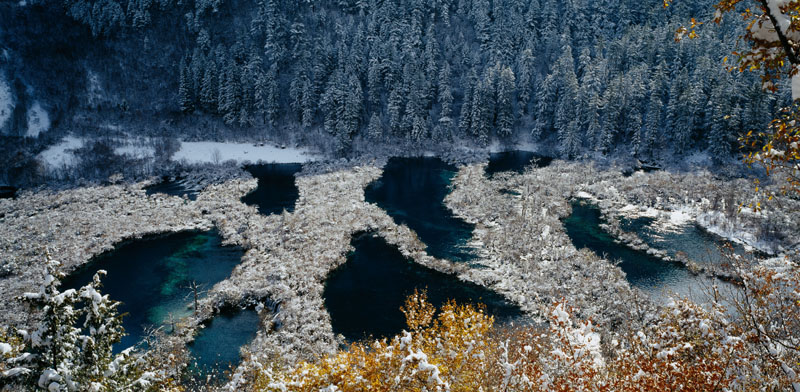Called Dzitsa Degu in Tibetan, Jiuzhai Valley or Jiuzhaigou National Park is located in the Aba Tibetan and Qiang Autonomous Prefecture of Sichuan Province, South Western China. It was declared a UNESCO World Heritage Site in 1992 and it belongs to the category 5 in the IUCN system of protected area categorization. Jiuzhai Valley literally means “Nine Village Valley” and is named after the nine Tibetan villages scattered throughout the park. There is evidence of people living in the national park up to 3,000 years and the local people still hold onto many of their traditional ways of life. The human population of the park is just over 1,000 which comprises of over 110 families.

The superb landscapes of Jiuzhai Valley are particularly interesting for their narrow conic karst land forms and spectacular waterfalls and lakes. There are over 220 bird species found in Jiuzhai Valley as well as a number of endangered plant and animal species, including the giant panda, Sichuan golden monkey and the Sichuan takin.

Jiuzhai Valley is part of the Min Shan mountain range on the edge of the Tibetan Himalayan Pletau and stretches over 720 sq km (72,000 hectares) with an extra buffer zone of 598 sq. km (60,000 hectares). The Min Mountains are one of South West China’s most important biodiversity typezones. The elevation of the national park ranges from almost 2,000m (6,500 feet) at the entrance to over 4,500m (14,760 feet) on the mountain peaks and the series of forest ecosystems are stratified by elevation.






